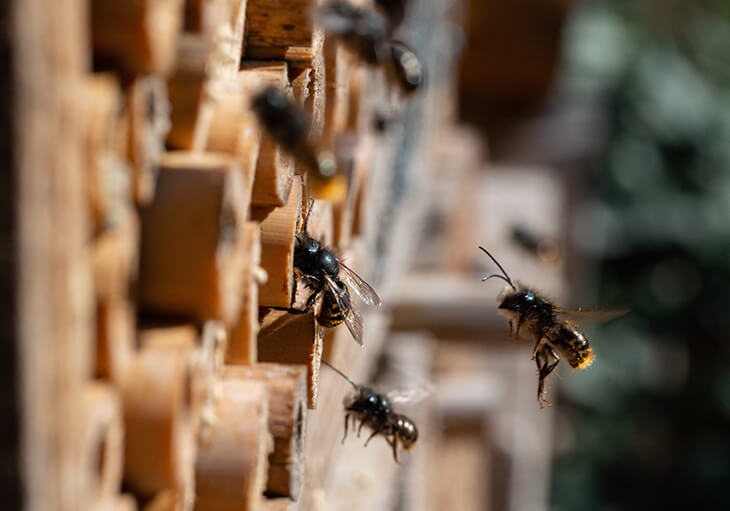
Snug as a Bug: How bamboo makes ideal bug hotels
Bamboo poles make perfect insect houses. You might ask, why would I want to give insects a home, but there are good reasons why you should.
The average garden can hold more than 2,000 different species of insects.
Very few of them cause significant damage to flowers, fruit and vegetables so giving them a home won’t encourage destruction.
If you give insects a great habitat, you’ll increase the number of beneficial insects in your garden. And that can help your garden grow! Wild invertebrates, such as bumble bees and solitary bees, are sadly declining in numbers. Give them a home, and you contribute to bee numbers.
The simplest insect house involves tying together a few lengths of bamboo pole, but you can make more elaborate homes using old plastic bottles, pallets and plant pots. Such a house incorporates recycling too, another bonus! There are instructions for a great insect house that uses bamboo poles and others here.
Site your insect house in a semi-shady area of the garden.
Most invertebrates prefer cool, damp conditions. Choose a level, even surface to put it on. If you place the insect house near to other wildlife features such as shrubberies, a pond or an overgrow hedge, this will make it easier for the insects to find it.
Bamboo poles are good for solitary bees, which will help pollinate your garden. Bees like the sun, so place the poles in a sunny part of the garden. Female bees will lay eggs on a top of a mass of pollen at the end of a hollow tube.
Frogs like holes too. As frogs eat slugs and many other garden pests attracting them to your garden is a great way to receive help from this natural pesticide. They do need a pond to breed in, but frogs spend most of the year out of the water. Newts will also take advantage.
The wonderful thing about bamboo poles is that they can create an insect house that matches other furniture in your garden. They will go beautifully with bamboo fences, vegetable planters, path liners and more.

